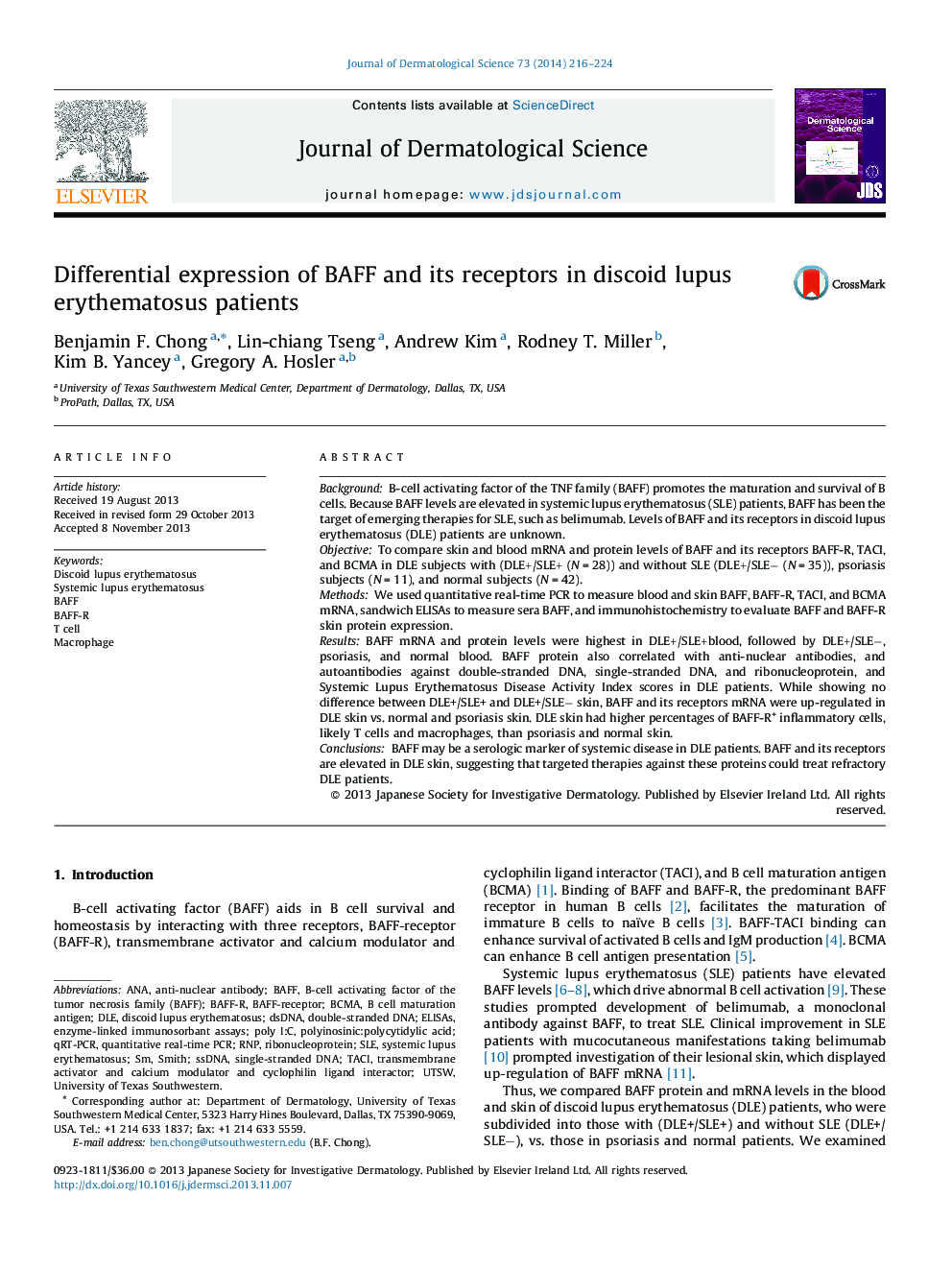| Article ID | Journal | Published Year | Pages | File Type |
|---|---|---|---|---|
| 3212786 | Journal of Dermatological Science | 2014 | 9 Pages |
BackgroundB-cell activating factor of the TNF family (BAFF) promotes the maturation and survival of B cells. Because BAFF levels are elevated in systemic lupus erythematosus (SLE) patients, BAFF has been the target of emerging therapies for SLE, such as belimumab. Levels of BAFF and its receptors in discoid lupus erythematosus (DLE) patients are unknown.ObjectiveTo compare skin and blood mRNA and protein levels of BAFF and its receptors BAFF-R, TACI, and BCMA in DLE subjects with (DLE+/SLE+ (N = 28)) and without SLE (DLE+/SLE− (N = 35)), psoriasis subjects (N = 11), and normal subjects (N = 42).MethodsWe used quantitative real-time PCR to measure blood and skin BAFF, BAFF-R, TACI, and BCMA mRNA, sandwich ELISAs to measure sera BAFF, and immunohistochemistry to evaluate BAFF and BAFF-R skin protein expression.ResultsBAFF mRNA and protein levels were highest in DLE+/SLE+blood, followed by DLE+/SLE−, psoriasis, and normal blood. BAFF protein also correlated with anti-nuclear antibodies, and autoantibodies against double-stranded DNA, single-stranded DNA, and ribonucleoprotein, and Systemic Lupus Erythematosus Disease Activity Index scores in DLE patients. While showing no difference between DLE+/SLE+ and DLE+/SLE− skin, BAFF and its receptors mRNA were up-regulated in DLE skin vs. normal and psoriasis skin. DLE skin had higher percentages of BAFF-R+ inflammatory cells, likely T cells and macrophages, than psoriasis and normal skin.ConclusionsBAFF may be a serologic marker of systemic disease in DLE patients. BAFF and its receptors are elevated in DLE skin, suggesting that targeted therapies against these proteins could treat refractory DLE patients.
